Popular categories
Looking for a yarn?
Order DROPS Cotton Merino from Wool Warehouse Direct Ltd
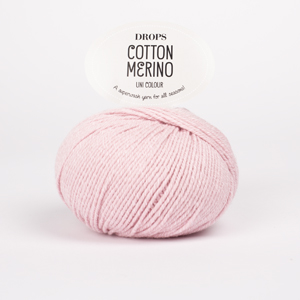
|
DROPS Cotton Merino uni colour 50% Wool, 50% Cotton |
3.10 $ /50g |
Order |
Clicking the ORDER button will redirect you to Wool Warehouse Direct Ltd website
Order DROPS Buttons

Arched (white) No. 521
OrderClicking the ORDER button will redirect you to Wool Warehouse Direct Ltd website
Order DROPS Needles & Hooks
Clicking the ORDER button will redirect you to Wool Warehouse Direct Ltd website
The yarn cost is calculated from the pattern’s smallest size and the yarn’s cheapest product type. Looking for an even better price? You might find it on the DROPS Deals!
Wendy Darling
Knitted dress and hair band with lace pattern in DROPS Cotton Merino. Size children 2 - 10 years
Change language:
English (US/in)- English (US/in)
- Česky
- Dansk
- Deutsch
- Eesti keel
- English (UK/cm)
- Español
- Français
- Íslenska
- Italiano
- Magyar
- Nederlands
- Norsk
- Polski
- Português
- Suomi
- Svenska
- English (UK/cm), Bulgaria
- English (UK/cm), Croatia
- English (UK/cm), Greece
- English (UK/cm), Latvia
- English (UK/cm), Lithuania
- English (UK/cm), Romania
- English (UK/cm), Slovenia
- Česky, Slovakia
DROPS design: Pattern no cm-003-bn
Yarn group B
----------------------------------------------------------
DRESS:
Size: 2 - 3/4 - 5/6 - 7/8 - 9/10 years
All measurements in chart in cm.
Materials:
DROPS COTTON MERINO from Garnstudio
250-300-350-400-450 g color no 16, denim blue
HAIR BAND:
Size: 2/4 - 5/6 - 7/8 - 9/10 years
Head circumference: 48/50 - 50/52 - 52/53 - 54/55 cm / 19¼"-20"-20¾"-21½"
Materials:
DROPS COTTON MERINO from Garnstudio
50 g for all sizes in color no 16, denim blue
DROPS DOUBLE POINTED NEEDLES and CIRCULAR NEEDLE (60 cm / 24") SIZE 3.5 mm/US 4 - or size needed to get 22 sts x 30 rows in stockinette st = 4" x 4" (10 x 10 cm).
DROPS BUTTON: ARCHED (white), NO 521: 2 pieces for all sizes for dress.
-------------------------------------------------------
Alternative Yarn – See how to change yarns here
Yarn Groups A to F – Use the same pattern and change the yarn here
Yarn usage using an alternative yarn – Use our yarn converter here
-------------------------------------------------------
You might also like...
Order DROPS Cotton Merino from Wool Warehouse Direct Ltd

|
DROPS Cotton Merino uni colour 50% Wool, 50% Cotton 3.10 $ /50g Order |
Clicking the ORDER button will redirect you to Wool Warehouse Direct Ltd website
Order DROPS Buttons

Arched (white) No. 521
OrderClicking the ORDER button will redirect you to Wool Warehouse Direct Ltd website
Order DROPS Needles & Hooks
Clicking the ORDER button will redirect you to Wool Warehouse Direct Ltd website
The yarn cost is calculated from the pattern’s smallest size and the yarn’s cheapest product type. Looking for an even better price? You might find it on the DROPS Deals!
Pattern instructions
DECREASE TIP:
Dec as follows before A.3: K 2 tog.
Dec as follows after A.3: Slip 1 st as if to K, K 1, psso
BUTTONHOLES:
Dec for buttonholes on left back piece. Dec by working second and third st tog from mid back, then make a YO.
Dec for buttonholes when band measures 2 and 4 cm / ¾" and 1½".
GARTER ST (back and forth):
K all rows. 1 ridge = K2 rows.
----------------------------------------------------------
DRESS:
Worked in the round on circular needle from bottom up.
Cast on 192-192-224-224-256 sts on circular needle size 3.5 mm / US 4 with Cotton Merino. Work A.1. Then work A.2 (= 6-6-7-7-8 repetitions in width). When A.2 has been worked 1 time vertically, work as follows - beg 1 st before first st on round: * A.3 (= 3 sts), 29 sts in stockinette st *, repeat from *-* 6-6-7-7-8 times. AT THE SAME TIME when piece measures 15 cm / 6", dec 1 st before every A.3 – READ DECREASE TIP (= 6-6-7-7-8 sts dec). Repeat dec alternately before and after A.3 every every 1-1½-1½-2-2 cm / ⅜"-½"-½"-¾"-¾" a total of 12-10-12-10-12 times = 120-132-140-154-160 sts. Continue in stockinette st and A.3 until piece measures 27-29-32-35-37 cm / 10½"-11½"-12½"-13¾"-14½". Now work A.1 over all sts, on first row in A.1 adjust no of sts to 124-132-140-148-160. Insert 2 markers in the piece; one at the beg of round and 1 after 62-66-70-74-80 sts = sides.
Continue in stockinette st over all sts. When piece measures 34-37-41-45-49 cm / 13½"-14½"-16"-17¾"-19¼", bind off 6 sts in each side for armholes (i.e. 3 sts on both sides of every marker) and finish each piece separately.
BACK PIECE:
= 56-60-64-68-74 sts. Continue bind off for armholes in each side at beg of every row as follows: 2 sts 1 time and 1 st 2-2-1-1-2 times = 48-52-58-62-66 sts. When piece measures 38-42-47-52-57 cm / 15"-16½"-18½"-20½"-22½", slip the first 22-24-27-29-31 sts (from RS) on 1 stitch holder for right shoulder (work them first) and finish each shoulder separately.
LEFT SHOULDER:
= 26-28-31-33-35 sts. Continue in stockinette st but work the first 4 sts on needle (towards middle) in garter st (= button band). Dec for BUTTONHOLES - see explanation above. When piece measures 44-48-53-58-63 cm / 17¼"-19"-21"-22¾"-24¾", slip the first 4 sts on a stitch holder (work them first), then bind off the next 10-11-12-13-13 sts for neck. Then bind off 1 st on next row towards the neck = 11-12-14-15-17 sts remain on the shoulder. Bind off when piece measures 46-50-55-60-65 cm / 18"-19¾"-21½"-23½"-25½".
RIGHT SHOULDER:
Slip the 22-24-27-29-31 sts from stitch holder back on needle and cast on 4 new sts at the end of first row from RS (= button band) = 26-28-31-33-35 sts. Work as left shoulder but reversed, do not dec for buttonholes.
FRONT PIECE:
= 56-60-64-68-74 sts. Bind off for armhole in the sides as on back piece = 48-52-58-62-66 sts. When piece measures 41-45-50-55-60 cm / 16"-17¾"-19¾"-21½"-23½", slip the middle 18-20-22-24-24 sts on a stitch holder for neck and finish each shoulder separately. Then bind off on every row towards neck: 2 sts 1 time and 1 st 2 times = 11-12-14-15-17 sts remain on shoulder. Bind off when piece measures 46-50-55-60-65 cm / 18"-19¾"-21½"-23½"-25½".
SLEEVE:
Worked in the round on double pointed needles. Cast on 40-42-44-46-48 sts on double pointed needles size 3.5 mm / US 4 with Cotton Merino. Work A.1 over all sts, then work in stockinette st. Insert 1 marker at beg of round = mid under sleeve. When piece measures 6 cm / 2⅜", inc 1 st on each side of marker. Inc every 6-3½-3-3-3 cm / 2½"-1¼"-1"-1"-1" 2-4-6-7-8 more times = 46-52-58-62-66 sts. When piece measures 20-23-26-29-32 cm / 8"-9"-10¼"-11½"-12½", bind off 6 sts mid under sleeve for sleeve cap. Then work sleeve back and forth while AT THE SAME TIME dec for sleeve cap in each side as follows: Dec 2 sts in each side until piece measures 24-27-30-33-36 cm / 9½"-10½"-11¾"-13"-14¼". Bind off 3 sts in each side, then bind off the remaining sts. Piece measures approx. 25-28-31-34-37 cm / 9¾"-11"-12¼"-13½"-14½".
ASSEMBLY:
Sew the shoulder seams. Sew in sleeves. Sew the buttons on to right band. Then place the 4 sts from right back piece behind the 4 sts on the left back piece and fasten with small sts.
NECK EDGE: Pick up approx. 72 to 88 sts (includes sts on stitch holders) around the neck on circular needle size 3.5 mm / US 4. Work 2 ridges. Bind off.
----------------------------------------------------------
HAIR BAND:
Cast on 15 sts on needle size 3.5 mm / US 4 with Cotton Merino. Work 1 ridge in GARTER ST - see explanation above, then work A.4 over all sts. Continue with A.4 until piece measures 41-42-43-44 cm / 16"-16½"-17"-17¼" (lightly pull piece when measuring), work a ridge, bind off. Sew cast-on and bind-off edge tog with grafting/kitchener stitches.
Diagram
All measurements in charts are in cm.

|
= K from RS, P from WS |

|
= P from RS, K from WS |

|
= 1 YO between 2 sts |

|
= slip 1 st as if to K, K 1, psso |

|
= K 2 tog |

|
= slip 1 st as if to K, K 2 tog, psso |


What can you do with our patterns? You can share DROPS patterns online, using the pattern original picture, materials, name and number. But you are NOT ALLOWED to reproduce the complete pattern digitally in any way. Yarn stores are welcome to use the DROPS pattern database to promote the sale of our assortment. You can print out our patterns, make as many copies as you’d like. The only thing we ask is that you don't make any changes / additions to the original printed document. And that the patterns according to the DROPS philosophy are given out to the consumers for free. Editorials that wish to publish our patterns in printed books or magazines can contact us for more information. The sale of garments based on DROPS patterns is permitted as long as they are sold as single items or per order. Further commercial use of the patterns is not permitted. It has to be clearly stated that the garment is made based on a design from DROPS DESIGN. The use of clothing labels of which DROPS DESIGN forms part is conditioned by the inclusion of the following text: “A DROPS DESIGN made by …..”. The use of DROPS photos for marketing purposes/sales is only permitted in connection with the use/sale of DROPS products. The photos may not be cut or edited and the logo should be clearly visible.
We reserve the right to withdraw the permission for use of our patterns at any time, notwithstanding the reason.
Each of our patterns has specific tutorial videos to help you.
These step-by-step tutorials might also help you:
Why is the knitting/crochet tension so important?
Knitting tension is what determines the final measurements of your work, and is usually measured per 10 x 10 cm. It is provided like so: number of stitches in width x number of rows in height - eg: 19 stitches x 26 rows = 10 x 10 cm.
The knitting tension is very individual; some people knit/crochet loosely while others work tightly. You adjust the knitting tension with the needle size, which is why the suggested needle size only serve as a guide! You need to adjust this (up or down) to ensure that YOUR knitting tension matches the knitting tension provided in the pattern. If you work with a different knitting tension than provided you will have a different yarn consumption, and your work will have different measurements than what the pattern suggests.
The knitting tension also determines which yarns can replace each other. As long as you achieve the same knitting tension you can replace one yarn with another.
See DROPS lesson: How to measure your tension/gauge
See DROPS video: How to make a gauge tension swatch
How do I know how many balls of yarn I need?
The required amount of yarn is provided in grams, eg: 450 g. To calculate how many balls you’ll need you first need to know how many grams are in 1 ball (25g, 50g or 100g). This information is available if you click on the individual yarn quality on our pages. Divide the amount required with the amount of each ball. For example, if each ball is 50g (the most common amount), the calculation will be as follows: 450 / 50 = 9 balls.
Can I use a different yarn than what the pattern suggests?
The important thing when changing from one yarn to another is that the knitting/crochet tension remains the same. This is so that the measurements of the finished piece will be the same as on the sketch provided. It is easier to achieve the same knitting tension using yarns from the same yarn group. It is also possible to work with multiple strands of a thinner yarn to achieve the knitting tension of a thicker one. Please try our yarn converter. We recommend you to always work a test swatch.
Please NOTE: when changing yarn the garment might have a different look and feel to the garment in the photo, due to individual properties and qualities of each yarn.
See DROPS lesson: Can I use a different yarn than the one mentioned in the pattern?
What are the yarn groups?
All our yarns are categorised into yarn groups (from A to F) according to thickness and knitting tension – group A contains the thinnest yarns and group F the thickest. This makes it easier for you to find alternative yarns to our patterns, should you wish to switch yarn. All yarns within the same group have a similar knitting tension and can easily replace each other. However, different yarn qualities have different structures and properties which will give the finished work a unique look and feel.
How do I use the yarn converter?
At the top of all our patterns you’ll find a link to our yarn converter, which is a helpful tool should you wish to use a different yarn than suggested. By filling in the yarn quality you wish to replace, the amount (in your size) and number of strands, the converter will present good alternative yarns with the same knitting tension. Additionally it will tell you how much you’ll require in the new qualities and whether you’ll need to work with multiple strands. Most skeins are 50g (some are 25g or 100g).
If the pattern is worked with multiple colours, every colour will have to be converted separately. Similarly, if the pattern is worked with several strands of different yarns (for example 1 strand Alpaca and 1 strand Kid-Silk) you will have to find alternatives for each, individually.
Why do you show discontinued yarns in the patterns?
Since different yarns have different qualities and textures we have chosen to keep the original yarn in our patterns. However, you can easily find options among our available qualities by using our yarn converter, or simply pick a yarn from the same yarn group.
It is possible that some retailers still have discontinued yarns in stock, or that someone has a few skeins at home that they would like to find patterns for.
The yarn converter will provide both alternative yarn as well as required amount in the new quality.
What size should I knit?
If you think it's hard to decide what size to make, it can be a good idea to measure a garment you own already and like the size of. Then you can pick the size by comparing those measures with the ones available in the pattern's size chart.
You'll find the size chart at the bottom of the pattern.
See DROPS lesson: How to read size chart
Why do I get the wrong knitting tension with the suggested needle size?
The needle size provided in the pattern serves only as a guide, the important thing is to follow the knitting tension. And since knitting tension is very individual, you will have to adjust the needle size to ensure that YOUR tension is the same as in the pattern – maybe you’ll have to adjust 1, or even 2 needle sizes, up or down to achieve the correct tension. For this, we recommend that you work test swatches.
Should you work with a different knitting tension than the one provided, the measurements of the finished garment might deviate from the measurement sketch.
See DROPS lesson: How to measure your tension/gauge
See DROPS video: How to make a gauge tension swatch
Why is the pattern worked top-down?
Working a garment top-down provides more flexibility and room for personal adjustment. For example it is easier to try the garment on while working, as well as making adjustments to length of yoke and shoulder caps.
The instructions are carefully explaining every step, in the correct order. Diagrams are adjusted to the knitting direction and are worked as usual.
How do I work according to a knitting diagram?
The diagram depicts all rows/rounds, and every stitch seen from the right side. It is read from bottom to top, from right to left. 1 square = 1 stitch.
When working back and forth, every other row is worked from the right side and every other row is worked from the wrong side. When working from the wrong side, the diagram will have to be worked reversed: from left to right, knit stitches are purled, purl stitches are knit etc.
When working in the round every round is worked from the right side and the diagram are worked from right to left on all rounds.
See DROPS lesson: How to read knitting diagrams
How do I work according to a crochet diagram?
The diagram depicts all rows/rounds, and every stitch seen from the right side. It is worked from bottom to top, from right to left.
When working back and forth every other row is worked from the right side: from right to left and every other row is worked from the wrong side: from left to right.
When working in the round, every row in the diagram are worked from the right side, from right to left.
When working a circular diagram you start in the middle and work your way outwards, counter clockwise, row by row.
The rows usually start with a given number of chain stitches (equivalent to the height of the following stitch), this will either be depicted in the diagram or explained in the pattern.
See DROPS lesson: How to read crochet diagrams
How do I work several diagrams simultaneously on the same row/round?
Instructions for working several diagrams after each other on the same row/round, will often be written like so: “work A.1, A.2, A.3 a total of 0-0-2-3-4 times". This means you work A.1 once, then A.2 is worked once, and A.3 is repeated (in width) the number of times provided for your size – in this case like so: S = 0 times, M = 0 times, L=2 times, XL= 3 times and XXL = 4 times.
The diagrams are worked as usual: begin with the first row in A.1, then work the first row in A.2 etc.
See DROPS lesson: How to read knitting diagrams
See DROPS lesson: How to read crochet diagrams
Why are the sleeves shorter in larger sizes?
The total width of the garment (from wrist-to-wrist) will be larger in the larger sizes, despite the actual sleeves being shorter. The larger sizes have longer sleeve caps and wider shoulders, so there will be a good fit in all sizes.
Where on the garment is the length measured?
The measurement sketch/schematic drawing provides information regarding the full length of the garment. If it’s a jumper or a jacket the length is measured from the highest point on the shoulder (usually closest to the neckline), and straight down to the bottom of the garment. It is NOT measured from the tip of shoulder. Similarly, the length of yoke is measured from the highest point on the shoulder and down to where yoke is split into body and sleeves.
See DROPS lesson: How to read a schematic drawing
What is a repeat?
Diagrams are often repeated on the round or in height. 1 repeat is the diagram the way it appears in the pattern. If it says to work 5 repeats of A.1 in the round, then you work A.1 a total of 5 times after/next to each other in the round. If it says to work 2 repeats of A.1 vertically/in height you work the entire diagram once, then begin again at the start and work the entire diagram one more time.
Why does the piece start with more chain stitches than it’s worked with?
Chain stitches are slightly narrower than other stitches and to avoid working the cast-on edge too tight, we simply chain more stitches to begin with. The stitch count will be adjusted on the following row to fit the pattern and measurement sketch.
Why increase before the rib edge when the piece is worked top-down?
The rib edge is more elastic and will contract slightly compared to, for example, stocking stitch. By increasing before the rib edge, you avoid a visible difference in width between the rib edge and the rest of the body.
Why increase in the cast-off edge?
It’s very easy to cast off too tightly, and by making yarn overs while casting off (and simultaneously casting these off) you avoid a too tight cast off edge.
See DROPS video: How to bind off with yarn overs (yo)
How do I increase/decrease on every 3rd and 4th row/round alternately?
To achieve an even increase (or decrease) you can increase on, for example: every 3rd and 4th row alternately, like so: work 2 rows and increase on the 3rd row, work 3 rows and increase on the 4th. Repeat this until the increase is complete.
See DROPS lesson: Increase or decrease 1 st on every 3rd and 4th row alternately
How can I work a jacket in the round instead of back and forth?
Should you prefer to work in the round instead of back and forth, you may of course adjust the pattern. You’ll need to add steeks mid-front (usually 5 stitches), and follow the instructions. When you would normally turn and work from the wrong side, simply work across the steek and continue in the round. At the end you’ll cut the piece open, pick up stitches to work bands, and cover the cut edges.
See DROPS video: How to knit steeks and cut open
Can I work a jumper back and forth instead of in the round?
Should you prefer to work back and forth instead of in the round, you may of course adjust the pattern so you work the pieces separately and then assemble them at the end. Divide the stitches for the body in 2, add 1 edge stitch in each side (for sewing) and work the front and back pieces separately.
See DROPS lesson: Can I adapt a pattern for circular needles into straight needles?
Why is the pattern slightly different than what I see in the photo?
Pattern repeats can vary slightly in the different sizes, in order to get the correct proportions. If you’re not working the exact same size as the garment in the photo, yours might deviate slightly. This has been carefully developed and adjusted so that the complete impression of the garment is the same in all sizes.
Make sure to follow instructions and diagrams for your size!
How do I make a women’s size garment into a men’s size one?
If you have found a pattern you like which is available in women’s size it’s not very difficult to convert it to men’s size. The biggest difference will be the length of sleeves and body. Start working on the women size that you think would fit across the chest. The additional length will be worked right before you cast off for the armhole/sleeve cap. If the pattern is worked top-down you can add the length right after the armhole or before the first decrease on sleeve.
Regarding additional yarn amount, this will depend on how much length you add, but it is better with a skein too many than too few.
How do I prevent a hairy garment from shedding?
All yarns will have excess fibres (from production) that might come off as lint or shedding. Brushed yarns (ie hairier yarns) have more of these loose, excess fibres, causing more shedding.
Shedding also depends on what is worn under or over the garment, and whether this pulls at the yarn fibres. It’s therefore not possible to guarantee that there will be no shedding
Below are some tips on how to get the best result when working with hairier yarns:
1. When the garment is finished (before you wash it) shake it vigorously so the looser hairs come off. NOTE: do NOT use a lint roller, brush or any method that pulls at the yarn.
2. Place the garment in a plastic bag and put it in your freezer - the temperature will cause the fibres to become less attached to each other, and excess fibres will come off easier.
3. Leave in the freezer for a few hours before taking it out and shaking it again.
4. Wash the garment according to the instructions on the yarn label.
Why does my garment pill?
Pilling is a natural process that happens to even the most exclusive of fibers. It's a natural sign of wear and tear that is hard to avoid, and that is most visible in high friction areas of your garment like a sweater's arms and cuffs.
You can make your garment look as new by removing the pilling, using a fabric comb or a pill/lint remover.
In the meantime, you can read the questions and answers that others have left to this pattern or join the DROPS Workshop on Facebook to get help from fellow knitters/crocheters!
Wendy Darling |
|||||||||||||||||||
 |
 |
||||||||||||||||||
Knitted dress and hair band with lace pattern in DROPS Cotton Merino. Size children 2 - 10 years
DROPS Children 26-6 |
|||||||||||||||||||
|
PATTERN: See diagrams A.1 to A.4. DECREASE TIP: Dec as follows before A.3: K 2 tog. Dec as follows after A.3: Slip 1 st as if to K, K 1, psso BUTTONHOLES: Dec for buttonholes on left back piece. Dec by working second and third st tog from mid back, then make a YO. Dec for buttonholes when band measures 2 and 4 cm / ¾" and 1½". GARTER ST (back and forth): K all rows. 1 ridge = K2 rows. ---------------------------------------------------------- DRESS: Worked in the round on circular needle from bottom up. Cast on 192-192-224-224-256 sts on circular needle size 3.5 mm / US 4 with Cotton Merino. Work A.1. Then work A.2 (= 6-6-7-7-8 repetitions in width). When A.2 has been worked 1 time vertically, work as follows - beg 1 st before first st on round: * A.3 (= 3 sts), 29 sts in stockinette st *, repeat from *-* 6-6-7-7-8 times. AT THE SAME TIME when piece measures 15 cm / 6", dec 1 st before every A.3 – READ DECREASE TIP (= 6-6-7-7-8 sts dec). Repeat dec alternately before and after A.3 every every 1-1½-1½-2-2 cm / ⅜"-½"-½"-¾"-¾" a total of 12-10-12-10-12 times = 120-132-140-154-160 sts. Continue in stockinette st and A.3 until piece measures 27-29-32-35-37 cm / 10½"-11½"-12½"-13¾"-14½". Now work A.1 over all sts, on first row in A.1 adjust no of sts to 124-132-140-148-160. Insert 2 markers in the piece; one at the beg of round and 1 after 62-66-70-74-80 sts = sides. Continue in stockinette st over all sts. When piece measures 34-37-41-45-49 cm / 13½"-14½"-16"-17¾"-19¼", bind off 6 sts in each side for armholes (i.e. 3 sts on both sides of every marker) and finish each piece separately. BACK PIECE: = 56-60-64-68-74 sts. Continue bind off for armholes in each side at beg of every row as follows: 2 sts 1 time and 1 st 2-2-1-1-2 times = 48-52-58-62-66 sts. When piece measures 38-42-47-52-57 cm / 15"-16½"-18½"-20½"-22½", slip the first 22-24-27-29-31 sts (from RS) on 1 stitch holder for right shoulder (work them first) and finish each shoulder separately. LEFT SHOULDER: = 26-28-31-33-35 sts. Continue in stockinette st but work the first 4 sts on needle (towards middle) in garter st (= button band). Dec for BUTTONHOLES - see explanation above. When piece measures 44-48-53-58-63 cm / 17¼"-19"-21"-22¾"-24¾", slip the first 4 sts on a stitch holder (work them first), then bind off the next 10-11-12-13-13 sts for neck. Then bind off 1 st on next row towards the neck = 11-12-14-15-17 sts remain on the shoulder. Bind off when piece measures 46-50-55-60-65 cm / 18"-19¾"-21½"-23½"-25½". RIGHT SHOULDER: Slip the 22-24-27-29-31 sts from stitch holder back on needle and cast on 4 new sts at the end of first row from RS (= button band) = 26-28-31-33-35 sts. Work as left shoulder but reversed, do not dec for buttonholes. FRONT PIECE: = 56-60-64-68-74 sts. Bind off for armhole in the sides as on back piece = 48-52-58-62-66 sts. When piece measures 41-45-50-55-60 cm / 16"-17¾"-19¾"-21½"-23½", slip the middle 18-20-22-24-24 sts on a stitch holder for neck and finish each shoulder separately. Then bind off on every row towards neck: 2 sts 1 time and 1 st 2 times = 11-12-14-15-17 sts remain on shoulder. Bind off when piece measures 46-50-55-60-65 cm / 18"-19¾"-21½"-23½"-25½". SLEEVE: Worked in the round on double pointed needles. Cast on 40-42-44-46-48 sts on double pointed needles size 3.5 mm / US 4 with Cotton Merino. Work A.1 over all sts, then work in stockinette st. Insert 1 marker at beg of round = mid under sleeve. When piece measures 6 cm / 2⅜", inc 1 st on each side of marker. Inc every 6-3½-3-3-3 cm / 2½"-1¼"-1"-1"-1" 2-4-6-7-8 more times = 46-52-58-62-66 sts. When piece measures 20-23-26-29-32 cm / 8"-9"-10¼"-11½"-12½", bind off 6 sts mid under sleeve for sleeve cap. Then work sleeve back and forth while AT THE SAME TIME dec for sleeve cap in each side as follows: Dec 2 sts in each side until piece measures 24-27-30-33-36 cm / 9½"-10½"-11¾"-13"-14¼". Bind off 3 sts in each side, then bind off the remaining sts. Piece measures approx. 25-28-31-34-37 cm / 9¾"-11"-12¼"-13½"-14½". ASSEMBLY: Sew the shoulder seams. Sew in sleeves. Sew the buttons on to right band. Then place the 4 sts from right back piece behind the 4 sts on the left back piece and fasten with small sts. NECK EDGE: Pick up approx. 72 to 88 sts (includes sts on stitch holders) around the neck on circular needle size 3.5 mm / US 4. Work 2 ridges. Bind off. ---------------------------------------------------------- HAIR BAND: Cast on 15 sts on needle size 3.5 mm / US 4 with Cotton Merino. Work 1 ridge in GARTER ST - see explanation above, then work A.4 over all sts. Continue with A.4 until piece measures 41-42-43-44 cm / 16"-16½"-17"-17¼" (lightly pull piece when measuring), work a ridge, bind off. Sew cast-on and bind-off edge tog with grafting/kitchener stitches. |
|||||||||||||||||||
Diagram explanations |
|||||||||||||||||||
|
|||||||||||||||||||

|
|||||||||||||||||||

|
|||||||||||||||||||
|
Have you made this or any other of our designs? Tag your pictures in social media with #dropsdesign so we can see them! Do you need help with this pattern?You'll find tutorial videos, a Comments/Questions area and more by visiting the pattern on garnstudio.com. © 1982-2024 DROPS Design A/S. We reserve all rights. This document, including all its sub-sections, has copyrights. Read more about what you can do with our patterns at the bottom of each pattern on our site. |
|||||||||||||||||||
With over 40 years in knitting and crochet design, DROPS Design offers one of the most extensive collections of free patterns on the internet - translated to 17 languages. As of today we count 309 catalogs and 11629 patterns - 11620 of which are translated into English (US/in).
We work hard to bring you the best knitting and crochet have to offer, inspiration and advice as well as great quality yarns at incredible prices! Would you like to use our patterns for other than personal use? You can read what you are allowed to do in the Copyright text at the bottom of all our patterns. Happy crafting!









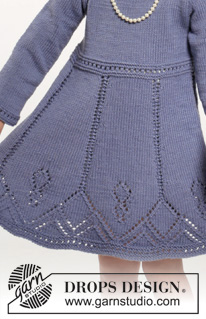









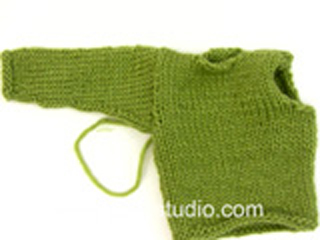
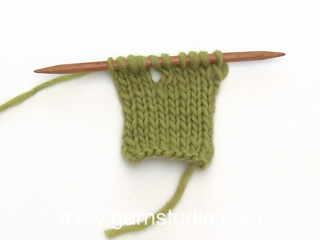
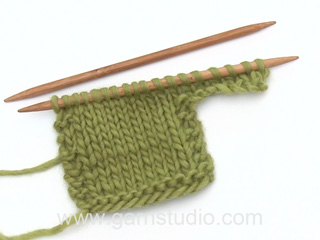
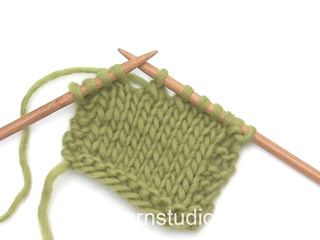
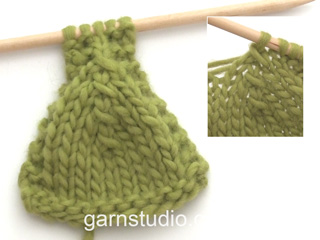


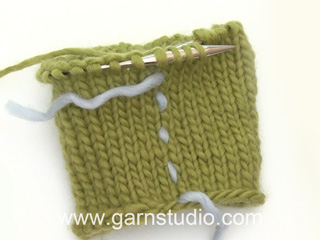
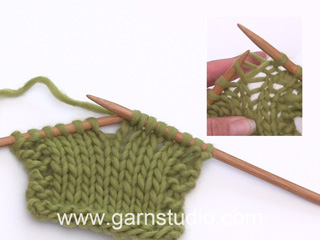
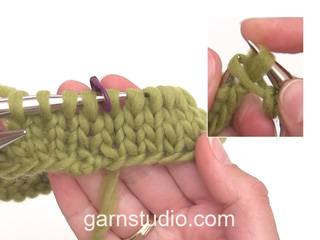

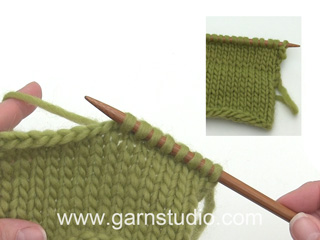


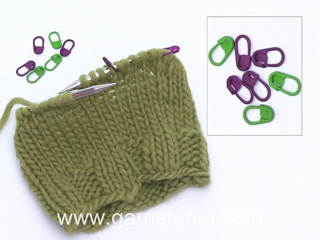
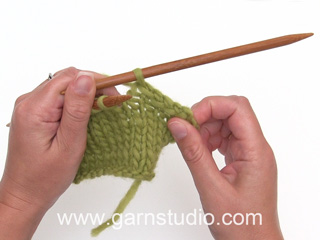
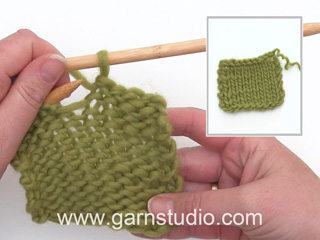

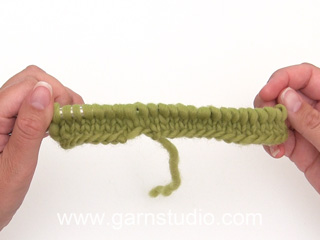

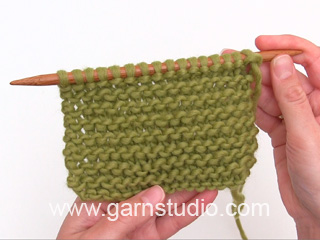





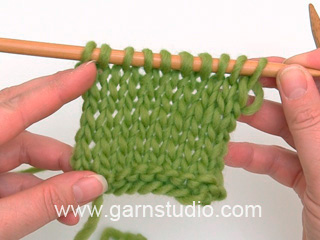






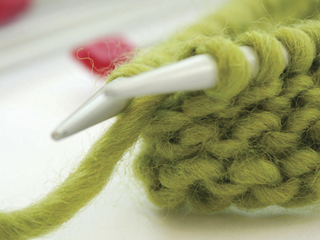





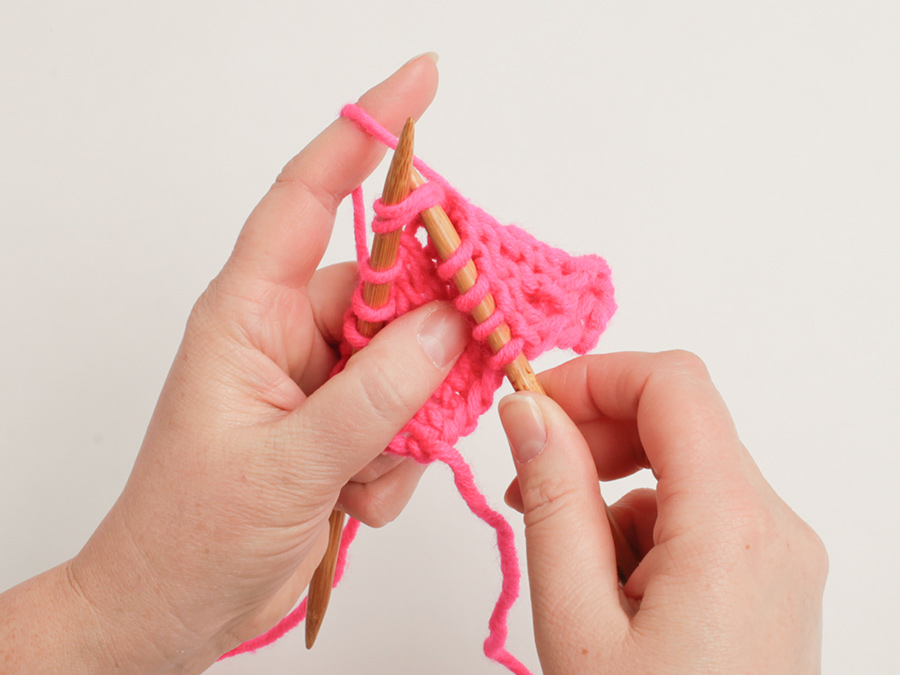








Comments / Questions (119)
Hej I opskrift Wendy Darling strikket pigekjole står, at der fra 29cm til 33cm ærmekuppel skal tages ind 2m i hver side og derefter tages 3m af i hver side. Der står ikke, hvor mange masker der skal lukkes af sidst og en ærmekuppel på kun 4-5cm virker “lille” ift. ærmegab på ca. 15cm? Er det korrekt forstået at ærmekuplen skal være sådan. Mvh Susanne
21.09.2024 - 23:24DROPS Design answered:
Hei Susanne. Ja, det stemmer slik det står. mvh DROPS Design
23.09.2024 - 14:16Jeg er ved at strikke denne opskrift men kan ikke få maskerne til at gå op der står at man skal tage ind før A3 6 gange det bliver 36 masker når det er gjort har man 156 m jeg startede med 192 m så for at få 132 m så har man 24 m tilbage og så kan man ikke tage yderligere 2m før og efter A3 10 gange er det mig der ikke kan regne Har lavet mange af jeres opskrifter og det er altid gået god Hilsen Sussi Madsen
11.08.2024 - 13:37DROPS Design answered:
Hej Sussi, hvis du starter med 192 masker, tager 6 masker ind 10 gange - 192-60=132 masker
15.08.2024 - 09:04I'm making the Wendy Darling dress is size 5/6. Working the first round of Chart A2, I did seven repetitions and found there were 18 extra stitches on the left side of the circular needle. Can you please tell me what I've done wrong? Thank you.
08.08.2024 - 01:48DROPS Design answered:
Hi Rebecca, You cast on 224 stitches in your size, then work A.2 on the round (7 repeats of 32 stitches = 224 stitches). A.2 should therefore cover all the stitches on the round. Make sure you have the correct number of knitted stitches between each set of decreases and yarn overs. Good luck and happy knitting!
08.08.2024 - 08:33Sind das in den Diagrammen jeweils eine Runde? In der Erklärung steht bei A1 in Hinreihe rechts und Rückreihe links. Das Modell wird aber in Runden gestrickt. Muss ich jetzt jeweils eine Runde links und eine Runde rechts stricken oder jeweils zwei Runden links und zwei Runden rechts?
26.05.2024 - 23:05DROPS Design answered:
Liebe Monika, die Diagramme zeigen alle Reihen bzw Runden; in Runden lesen Sie immer rechts nach links, so hier beginnt A.1 mit 1 Runde links, 1 Runde rechts, 1 Runde links, 1 Runde rechts, usw... Wenn man in Hin- und Rückreihe strickt, liest man die Rückreihe rechts nach links. Viel Spaß beim Stricken!
27.05.2024 - 08:53Pourquoi des aiguilles doubles pointes ?
23.04.2024 - 18:23DROPS Design answered:
Bonjour Maria, on utilise les aiguilles doubles pointes pour tricoter les manches; si vous êtes plus à l'aide sur aiguille circulaire, vous pouvez utiliser la technique du magic loop, cf vidéo. Bon tricot!
24.04.2024 - 08:15Je fais la robe pour 5-7 ans tout va bien jusqu'aux épaules je ne comprends pas comment procéder épaule gauche épaule droite ? Merci de m'aider.
18.11.2023 - 11:15DROPS Design answered:
Bonjour Mme Masson, dans le dos, on a une fente avec des boutons; on va ainsi devoir diviser le dos en 2 parties et les terminer séparément pour créer cette fente. Quand l'ouvrage mesure 47 cm (en taille 5/6 ans), tricotez les 27 premières mailles sur l'endroit et mettez-les en attente (épaule droite quand on porte la robe); tricotez maintenant les 31 mailles restantes avec 4 mailles point mousse en début de rang sur l'endroit/fin de rag sur l'envers pour la bordure de boutonnage du dos. Terminez le côté gauche du dos puis reprenez les mailles en attente pour tricoter le côté droit du dos. Bon tricot!
20.11.2023 - 09:52Hi i'm knitting size 6-7 year old. When i mark the sides am i doing something wrong if one side has pattern A3 and the other side not? Thanks
16.10.2023 - 16:49Hi. I'm knitting size 6-7 years. When I mark the sides am i doing something wrong if one side has pattern A3 and the other side not?
16.10.2023 - 16:45DROPS Design answered:
Dear Maria, A.3 is worked all the round with 29 sts stocking stitch between each A.3 so that there are 7 repeats of A.3 in the round in both size 5/6 years and 7/8 years. Can this help or do I misunderstand your question?
17.10.2023 - 09:05Would you please clarify the decrease for sleeve cap in a row by row description? Is the decrease 2 sts at each end of every row, or 1 st each end of every row? Also, how do you complete the decrease ... bind off or combine stitches? Thank you.
23.07.2023 - 14:37DROPS Design answered:
Dear Dale, first you cast off 2 sts in each side, that is, 2 stitches at the beginning of each row, both from the right side and the wrong side. When the piece measures 24-27-30-33-36 cm cast off 3 stitches in each side as before (once on each side) and then cast off the remaining stitches. You bind off these stitches one by one, instead of decreasing them together. Happy knitting!
23.07.2023 - 20:04I have a question about "repeat dec alternately before every A3 every 1 cm (for size 2). I have completed only 6 decrease rows (not the 12 as the pattern instructs) and I'm going to have fewer than 120 stitches. Would you please clarify how to perform these decreases?
11.07.2023 - 23:08DROPS Design answered:
Hi Brenda, You decrease alternately 1 stitch before A.3 (the first set of decreases) and after A.3 (the second set of decreases), with 6 stitches decreased on each decrease-round a total of 12 times = 72 stitches decreased. Starting with 192 stitches, this leaves you with 120 stitches when the decreases are finished. Happy knitting!
12.07.2023 - 07:18